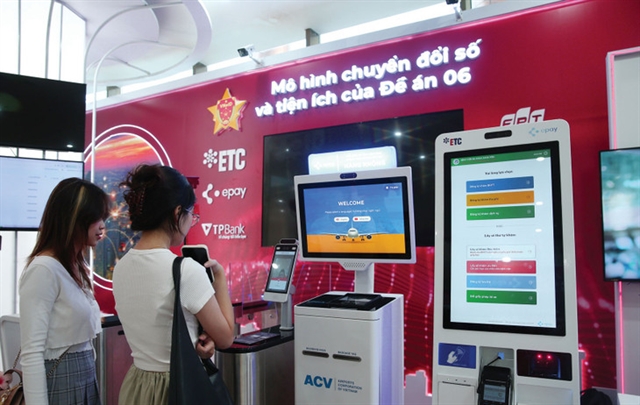 Business Beat
Business Beat

Banks with a relatively good performance and financial situation can easily adopt Basel II standards whereas it is difficult for those facing financial difficulties.
| ||
| All banks in the country have to adopt the standard version of Basel II and then switch to the advanced version by 2025. — Photo baokiemtoannhanuoc.vn |
In 2016 the State Bank set a deadline of January 1, 2020, for 17 banks to meet Basel II norms under a national banking sector development strategy.
Also, by 2025 all banks in the country have to adopt the standard version of Basel II and then switch to the advanced version.
Basel II is the second edition of the Basel Accords, which are recommendations on banking laws and regulations issued by the Basel Committee on banking supervision. It comprises minimum capital requirements, supervisory review and market discipline to enhance competition and transparency in the banking system and make banks more resistant to market changes.
Basel II requires banks to have a capital adequacy ratio (CAR) of at least 8 per cent.
However, the SBV has allowed 10 banks to adopt Basel II standards earlier than the 2020 deadline. They are Joint Stock Commercial Bank for Foreign Trade of Việt Nam (Vietcombank), Military Bank, Việt Nam Technological and Commercial Joint Stock Bank (Techcombank), Asia Commercial Bank, Việt Nam International Bank, Maritime Bank, and Việt Nam Prosperity Bank, TPBank, OCB, and HDBank.
The last three did not go through a pilot process.
State-owned BIDV and Vietinbank are under pressure to increase their charter capital to meet Basel II standards. Their CAR is now below 10 per cent.
Vietinbank seems to be facing the biggest obstacle since it has already reached its foreign ownership cap of 19.7 per cent.
Its other options now are to retain earnings and capitalise them if the central bank permits it or be capitalised by the Government.
But experts say the Government has yet to agree to give up its dividends and cannot prioritise funds from the State budget to add to the lender’s capital.
BIDV seems to be in a more comfortable situation. In July it wrapped up a 15 per cent stake sale to KEB Hana Bank, a subsidiary of South Korea’s Hana Financial Group. It sold 603 million shares for VNĐ20.3 trillion (US$882.6 million).
The deal has helped BIDV increase its CAR to 11.3 per cent, which allows it to increase its assets by 13 per cent.
Việt Nam has been quite late in adopting Basel II standards compared to other countries.
Banks with a relatively good performance and financial situation can easily adopt Basel II standards whereas it is difficult for those facing financial difficulties.
Most banks have plans to increase capital, but only a few medium-sized and large banks have managed to do so.
According to experts, it is a struggle for small banks to increase capital because of disadvantages like low profits, lack of transparent information and low stock prices.
So many banks would not be able to meet the Basel II requirements before the SBV’s deadline, they warned.
With just a couple of months to go for the deadline, it is hard to envisage the SBV not giving laggards more time.
In fact, it is in the process of drafting a new circular that will allow banks to delay the adoption of Basel II, Thời báo Tài Chính (Financial Times) newspaper reported recently.
The experts said it is a fait accompli since penalising laggards would hamstring the entire banking sector and in turn the economy.
Some others warn however that this would erode the authority and credibility of the central bank and the importance of Basel II.
The central bank should throw the book at laggards, curtailing their credit growth quotas or even placing them under special supervision.
Foreign investors covet Vietnamese fashion brands
In September Japanese casual clothing brand Stripe International acquired a 70 per cent stake in Vietnamese fashion retailer Global Fashion, owner of women’s accessories brand Vascara, marking its second acquisition in the country in two years.
Following the deal, Stripe International has taken over Global Fashion’s 134 Vascara outlets across the country.
Global Fashion, established in 2007, makes shoes and bags.
Vascara said last year it had more than 1.5 million customers.
Stripe currently owns 20 brands, largely in fashion but also recently diversifying into restaurants and hotels.
The Tokyo-based company had acquired clothing retailer Nem Group in 2017. The Hà Nội-based Nem had 80 stores across the country at that time.
In 2018 after building the Knoss fashion brand for over 10 years, CEO Cố Huệ Anh decided to sell it to Vietnamese retail-management company Seedcom, which has nine brands currently under its umbrella, with The Coffee House being the best known.
Industry insiders said most medium-sized Vietnamese fashion brands, many of whom have dozens of shops, face many difficulties including lack of space.
They lament that rentals in major cities like Hà Nội and HCM City have doubled or tripled in the last two years due to the fierce competition for prime space from convenience stores and banks.
This has made it very hard for fashion brands to expand, which is considered indispensable in the industry.
Lê Viết Thanh, director of K&K fashion brand, rents have doubled since 2017 while brand marketing and advertising costs are rising relentlessly, and now account for 7-8 per cent of turnover compared to just 1 per cent four or five years ago.
But fashion companies cannot increase their prices if they are to remain competitive especially with foreign brands now flooding the market.
Moreover, consumers’ shopping habits and behaviours have changed because of having too many options. Their brand loyalty has decreased, and many prefer to be led by advertisements and promotions.
Many renowned fashion brands like Ninomaxx, N&M, Blue Exchange, PT 200, Việt Thu, Ha Gattini, and Senorita have now been forced to reduce their number of shops, while some have even changed their business models.
“We see the potential of the Vietnamese fashion market, especially the footwear and bag industry…..,” Harigae Tsutomu, general director and CEO of Stripe SaiGon, told DealStreetAsia.
Analysts agreed with him, saying Việt Nam is a highly lucrative fashion market with a population of nearly 100 million and the market is growing at 20 per cent annually.
They also expressed regret at the fact Vietnamese fashion brands seem to have missed the bus. VNS




